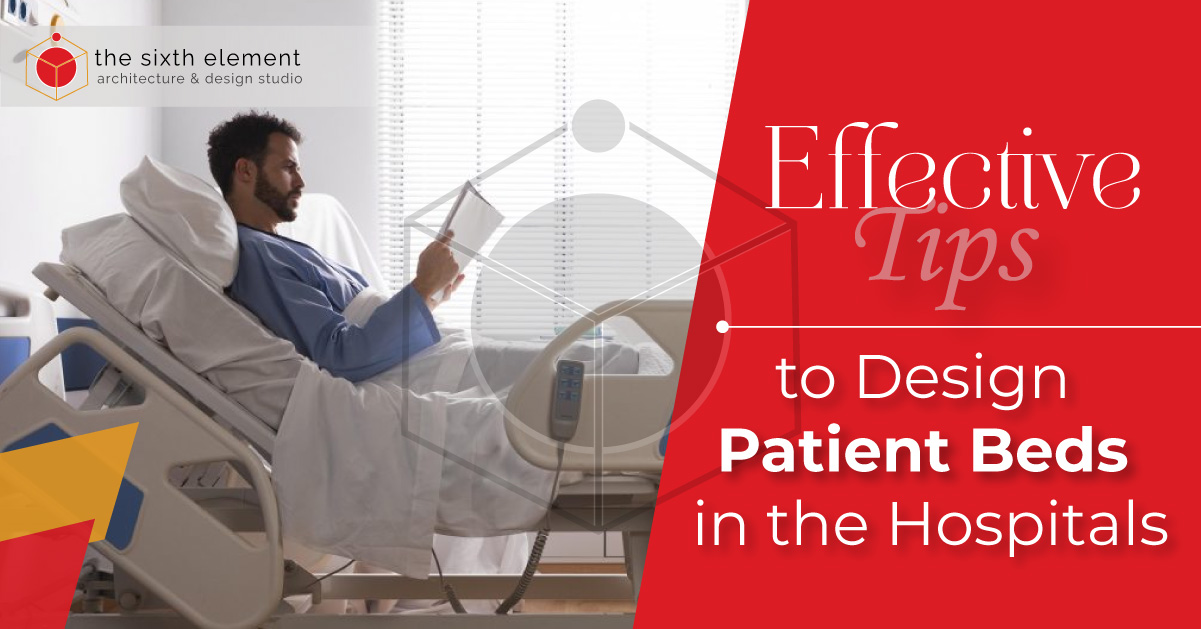Effective Tips to Design Patient Beds in the Hospitals
By The Mind of An Architect | January16, 2023 | Architecture

Hospital beds are essential equipment hospitals use to care for inpatients and other needs. The hospital bed is one of the things that helps to make the patient feel better. What gives? In Indonesia, beds are an essential part of the medical equipment that people need. Hospital beds must be different from regular beds in how they are made.
Ergonomics is one of the most important things to consider, especially concerning the comfort of hospital beds. Ergonomics is essential and is used in many different fields. For example, a workplace, a public building, or a military field. Ergonomics are crucial to the health field, especially when making hospital beds.
Moving around and being comfortable
When making or choosing a hospital bed, you must be careful about everything. Interior designers add some essential features when they make a bed for a very sick person who can't move and needs good care and comfort but can't get out of bed. It will help the person move the right way and make them feel very comfortable. Interior designer in Delhi knows how to make a technical and up-to-date patient bed.
Setting up a position
An expert can develop a hospital bed design that can be used for many different things. Some patients need to change their position, and a positioning operation will be beneficial when that happens. They can design based on what is required and plan for the future. With up-to-date knowledge and skills, they can prepare unique and special designs.
One of the most important things is the size of the bed
When making a patient bed, we have to remember that we have to make it based on a few essential things. So, when designing a bed for a patient, ensure it's longer than the patients tall.
Architects need help with designing hospital rooms
When doing hospital interior designing in Delhi, one of the hardest things for architects is ensuring the space can be used for three different things. First, the patient needs to feel comfortable and calm in the room. Second, carers need to move quickly and easily through the space. Lastly, family members and other visitors must have a place where they can sit or sleep without disrupting the staff's work or the patient's recovery. This is hard to do in a small hospital room because there is little room.
Another tricky part of designing hospital rooms is ensuring the nurses' station has a clear view of the room. Efficient hospital room design should also be flexible. Because every patient has different needs, this can add another complexity to the design process.
Features of hospital rooms that help them work better
Before designing a hospital room, architects do a lot of research on the needs of both the staff and the patients. Nursing Home Architect in Delhi has developed ways to create hospital rooms that make it easier for staff to do their daily jobs while also giving patients and their families a great time in the hospital. They did this by holding eco-charrettes, researching scientific studies, analysing hospital-provided data, and following evidence-based design principles. The following are some of these strategies:
Clear Sightlines
The following ideas about design help nurses keep an eye on all of their patients:
• Room Design: ICUs work best when patient rooms are set up in a U or C shape. This makes it easier for staff to watch and quickly get to every patient room from a central station.
• Seats in the cockpit: For large Nursing Units where the nurses' stations are spread out, architects design smaller, decentralised "cockpit" nurses' stations between groups of two rooms so that the patient can be watched directly.
• Glazed Doors: Staff can see into patient rooms through doors with glass panels. Architects know that improving the line of sight to hospital rooms is a best practice that helps staff work more efficiently and gives patients better care.
Places where supplies and equipment are easy to get to
The location of tools and equipment also affects how well staff do their jobs. So, architects think about the following:
• Putting cabinets and other heavy items in the lower cabinets: Some nurses may need help to reach the highest shelves in patient rooms and storage closets. So, to make a place for them, but less often used tools and supplies down in the storage rooms.
• Put things away precisely where they'll be used: The supplies are conveniently located in built-in drawers along the corridor walls separating patient rooms.
• In-ceiling gadgetry: By suspending patient lifts and intravenous poles from the ceiling, the floor space below is freed up, allowing for more efficient movement of workers. Employee productivity increases, and tasks are completed more efficiently when resources are easily accessible.
You can always get in touch with The Sixth Element. We are one of the best companies known for their unique and flexible design and planning for architectural projects. In this business, nothing can be done without experience and knowledge. We have both, and we know how to make our clients happy.

.png?)
